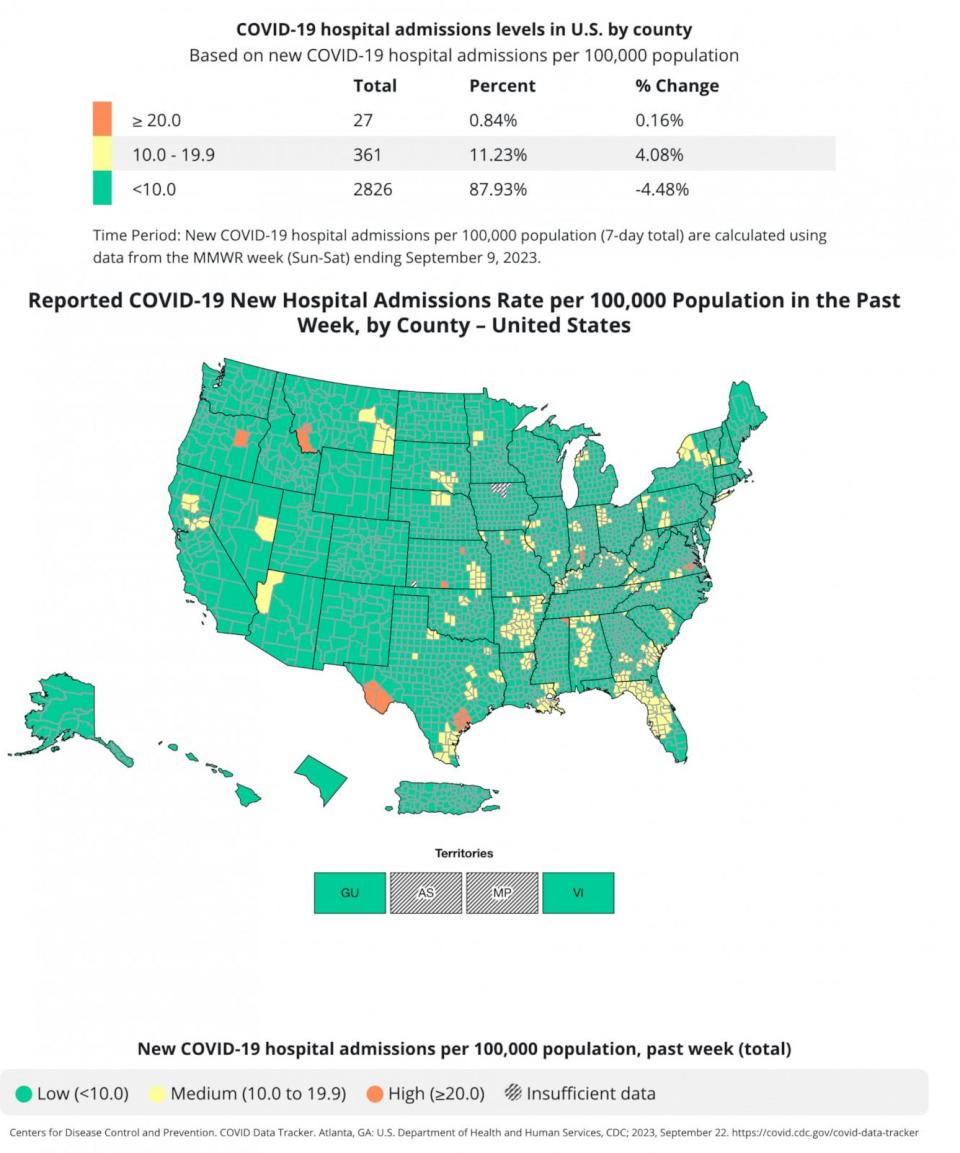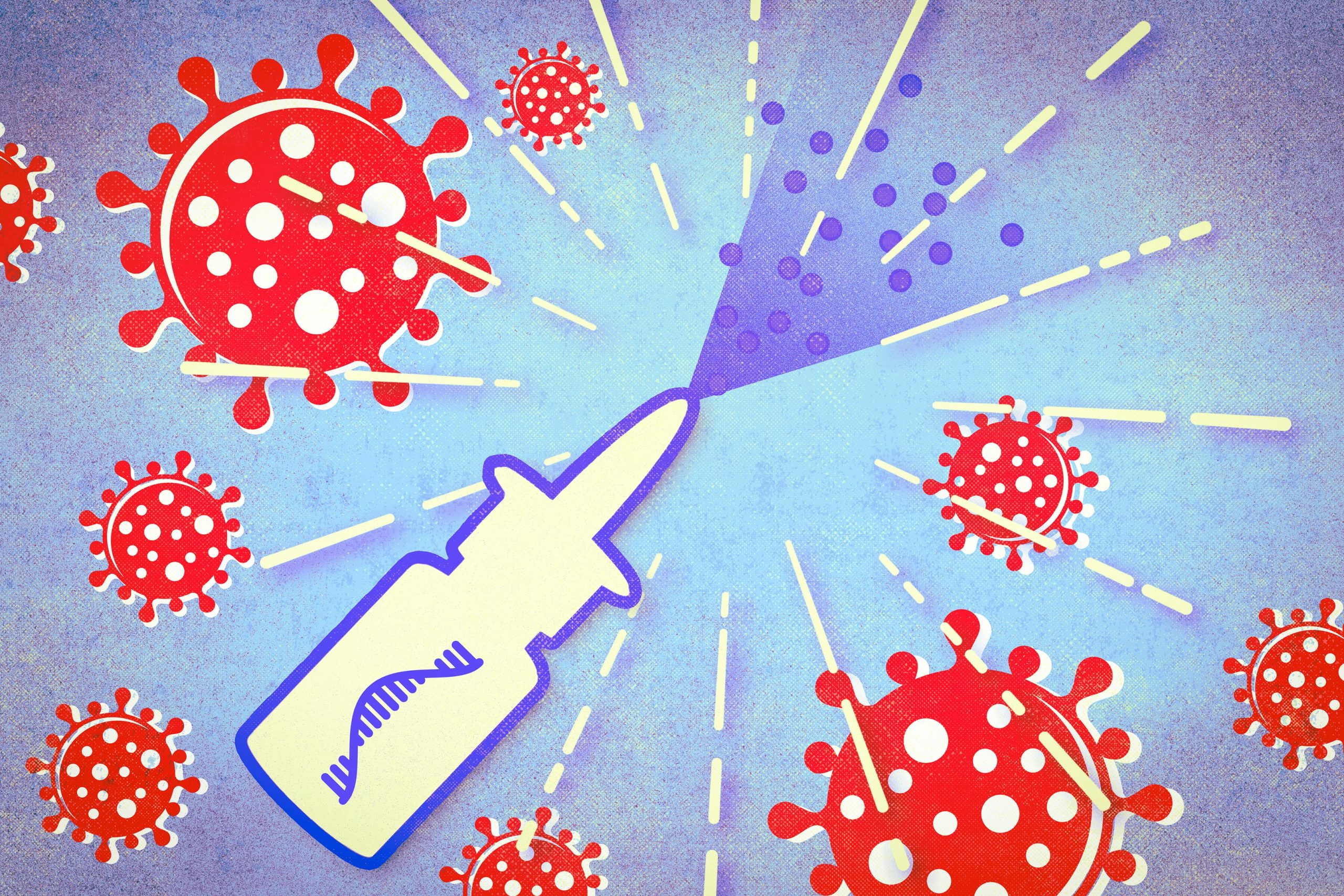Researchers estimated the COVID-19 vaccines led to approximately 17 million deaths worldwide, with the most deaths occuring among the elderly.

childrenshealthdefense.org
(fair use applies)
‘Definite Causal Link’ Between COVID Vaccine Rollouts and Peaks in All-Cause Mortality, New Study Finds
Researchers estimated the COVID-19 vaccines led to approximately 17 million deaths worldwide, with the most deaths occuring among the elderly.
By Brenda Baletti, Ph.D.
09/20/23
A
new study of 17 countries found a “definite causal link” between peaks in all-cause mortality and the rapid rollouts of the COVID-19 vaccines and boosters.
Researchers with Canada-based
Correlation Research in the Public Interest found more than half of the countries analyzed had no detectable rise in all-cause mortality after the World Health Organization declared a global pandemic on March 11, 2020 — until after the rollout of the COVID-19 vaccines and boosters.
They also found that all 17 countries, which make up 10.3% of the global population, had an unprecedented rise in all-cause mortality that corresponded directly to vaccine and booster rollouts.
Through a statistical analysis of mortality data, the authors calculated the fatal toxicity risk-per-injection increased significantly with age, but averaged 1 death per 800 injections across all ages and countries.
By that calculation, with 13.5 billion injections given up to Sept. 2, 2023, the researchers estimated there were 17 million COVID-19 vaccination deaths (± 500,000) globally following the vaccine roll-out.
“This would correspond to a mass iatrogenic event that killed 0.213 (± 0.006) % of the world population and did not measurably prevent any deaths,” the authors wrote.
This number, they noted, is 1,000 times higher than previously reported in data from clinical trials, adverse event monitoring and cause-of-death statistics gleaned from death certificates.
In other words, “The COVID-19 vaccines did not save lives and appear to be lethal toxic agents,” they wrote.
The shots were the most toxic for the most elderly across all 17 countries analyzed.
The authors concluded governments should “immediately end the baseless public health policy of prioritizing elderly residents for injection with COVID-19 vaccines, until valid risk-benefit analyses are made.”
The 180-page paper, by
Denis Rancourt, Ph.D. former physics professor and lead scientist for 23 years at the University of Ottawa, Marine Baudin, Ph.D., Joseph Hickey, Ph.D. and Jérémie Mercier, Ph.D. was published Sept. 17.
Using all-cause mortality to identify deaths caused by vaccines
All-cause mortality (ACM) — a measure of the total number of deaths from all causes in a given time frame for a given population — is the most reliable data used by epidemiologists for detecting and characterizing events causing death and for evaluating the population-level impact of deaths from any cause, the authors wrote.
Unlike other measures, ACM data are not susceptible to reporting bias or to biases that may exist in
subjective assessments of the cause of death. Any event, from a natural disaster like an earthquake to a wave of seasonal or pandemic illness appears in ACM data.
Using methodologies developed in their previous research on COVID-19 and vaccination in
India,
Australia, Israel, the
U.S. and
Canada, the authors used changes in all-cause mortality rates to identify deaths associated with mass vaccination.
Rancourt told
The Defender that after identifying the “stunning” correlation between vaccines, boosters and rising ACM in those five countries, the authors looked for other countries that had similar data so they could repeat the analysis to determine if the same synchronicity occurred.
They tracked and statistically analyzed the temporal relationship between spikes in national all-cause mortality rates, stratified by age where data were available, and the COVID-19 pandemic period and the vaccine and booster rollouts.
In other words, they analyzed whether “excess mortality” appeared following the announcement of the COVID-19 pandemic and following the introduction of initial vaccines or booster shots relative to previous all-cause mortality rates.
Excess mortality is a term used in epidemiology and public health that refers to the number of deaths from all causes during a crisis above and beyond what we would have expected to see under ‘normal’ conditions, according to Our World in Data.
Controlling for confounding factors such as seasonality, the authors calculated the vaccine-dose fatality rate (vDFR) — the ratio of vaccine-attributable deaths to the number of vaccines given. They found it ranged from 0.02 to 5%, depending on country, age and number of shots given and that the overall, all-ages vDFR for all 17 countries averaged 0.126 ± 0.004%.
“These findings appear to confirm arguments made by biologists including
Mike Yeadon and
Sucharit Bhakdi that the dangers for adverse autoimmune reactions would be predicted to increase with each subsequent exposure to the transfection,” said
Childrens’ Health Defense Staff Scientist
J. Jay Couey.
Factors such as seasonal illnesses can complicate analysis of all-cause mortality rates, because deaths from things like respiratory illnesses tend to peak in winter.
To eliminate seasonality as a possible confounding factor, the Correlation researchers, examined all available data for countries that rolled out the vaccines but where there was no seasonal fluctuation (equatorial countries) or the vaccines/boosters were rolled out during the summer and so the effects of the rollouts could be seen most clearly.
Those countries, all located in the equatorial region or the Southern Hemisphere where the rollouts were in the summer, included Argentina, Australia, Bolivia, Brazil, Chile, Colombia, Ecuador, Malaysia, New Zealand, Paraguay, Peru, Philippines, Singapore, South Africa, Suriname, Thailand and Uruguay.
The authors are working on extending this analysis to all countries across the world where data is available, Rancourt told The Defender.
Vaccination associated with high all-cause mortality regime in all countries
In nine of 17 countries analyzed, there was “no detectable excess mortality in the year or so between when a pandemic is announced on 11 March 2020 and the starting time of the first vaccine rollout in each country,” the paper reported.
In Australia, Malaysia, New Zealand, Paragua, Philippines, Singapore, Suriname, Thailand and Uruguay, excess mortality appeared only after the vaccine rollout.
In the other eight countries — Argentina, Bolivia, Brazil, Chile, Colombia, Ecuador, Peru and South Africa — excess mortality can be seen prior to the vaccine rollout.
However, the researchers said, “In all 17 countries, vaccination is associated with a regime of high mortality, and there is no association in time between COVID-19 vaccination and proportionate reduction in ACM.”
Also, all 17 countries showed a strong correlation with higher rates of ACM in early 2021, following the initial vaccine rollout and in early 2022, when the boosters were rolled out.
The authors underscore the finding that where age-stratified data were available, there were “remarkable temporal associations” between rapid first dose and booster rollouts and immediate peaks in all-cause mortality, and the transition to what Rancourt called “a new regime in mortality, where the mortality just stayed high for a long time.”
The paper includes reporting, graphs and data analysis by a number of different methods showing the temporal relationships between the pandemic announcement, vaccines and spikes in all-cause mortality for each individual country.

 Transitions between regimes of mortality — ACM by time (blue), vaccine administration by time (orange) and the average ACM by time (red). The March 11, 2020 pandemic declaration date is shown by a vertical grey line in each panel. The data sources are specified in Appendix A of the study. Credit: Rancourt, Baudin, Hickey and Mercier.
Causation, not just correlation
Transitions between regimes of mortality — ACM by time (blue), vaccine administration by time (orange) and the average ACM by time (red). The March 11, 2020 pandemic declaration date is shown by a vertical grey line in each panel. The data sources are specified in Appendix A of the study. Credit: Rancourt, Baudin, Hickey and Mercier.
Causation, not just correlation
The authors argue the evidence collected supports a causal link between vaccines and high mortality rates.
First, they cite
autopsy studies,
adverse event monitoring and
peer-reviewed publications, studies of
vaccine-induced pathologies,
analysis of adverse events in industry clinical trials and
payouts from global vaccine injury compensation programs, which together they say demonstrate the COVID-19 vaccines caused many individual deaths.
Then they point to several population-level studies, including their own prior research, that demonstrated a likely causal link.
And they cite principles of immunology that explain the mechanisms from severe harm from the COVID-19 vaccines.
The authors also addressed and discounted several proposed alternative explanations for the spikes in ACM, including that those changes are due to seasonal variation, heat waves, earthquakes, conflict, COVID-19 countermeasures, underlying health conditions or the appearance of COVID-19 variants.
They argued that COVID-19 variant “waves” cannot explain the spikes, they wrote.
For that to occur, the new variants would have to cause simultaneous peaks and surges in mortality in 17 countries, “which is a statistically impossible occurrence if we accept the theories of spontaneous viral mutations and contact spreading of viral respiratory diseases; and all the resulting peaks of mortality would have the remarkable coincidence of occurring precisely when vaccine boosters were rolled out.”
The authors concluded that the strong correlation between vaccine rollouts and the new higher regimes of ACM shows causality, according to the “experiment, temporality and consistency” criteria laid out by
Dr. John Ioannidis in a
2016 paper.
The same phenomenon, they write, is observed in different age and geographical settings (experiment), the rises in all-cause mortality are synchronous with the vaccine rollouts (temporality) and the phenomenon is qualitatively the same each time it occurs (consistency).
Prioritizing elderly people for vaccination was ‘reckless’
These “conclusive” findings contradict the common claims that the vaccines, despite their adverse effects, actually saved lives.
Instead, the authors write:
“We have found no evidence in our extensive research on ACM that COVID-19 vaccines had any beneficial effect. If vaccines prevented transmission, infection or serious illness, then there should be decreases in mortality following vaccine rollouts, not increases, as in every observed elderly age group subjected to rapid booster rollouts.”
To the contrary, the study confirmed the authors’ previous findings that
vDFR grows exponentially with age. They found the risk of dying from the COVID-19 injection doubled with every 4-5 years of age, which is approximately half the doubling age of dying of all causes of mortality, including cancer, pneumonia and heart disease.
They found large and age-dependent values of vDFR in elderly people that included, for example, a rate of 0.55% (one death per 180 injections) for people 80 and over in Israel to 5% (one death per 20 injections) for people 90 and over in Chile and Peru.
That means, the authors said, that there is not and was never any age-stratified risk of fatality data to support the public health policies that prioritized elderly people for vaccination.
“Prioritizing elderly people for COVID-19 vaccination, in the absence of relevant data, was reckless.”

news.yahoo.com




























